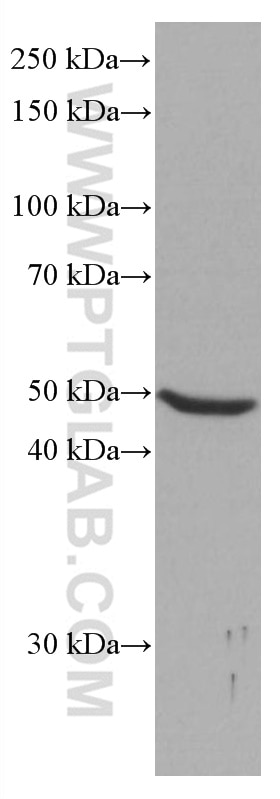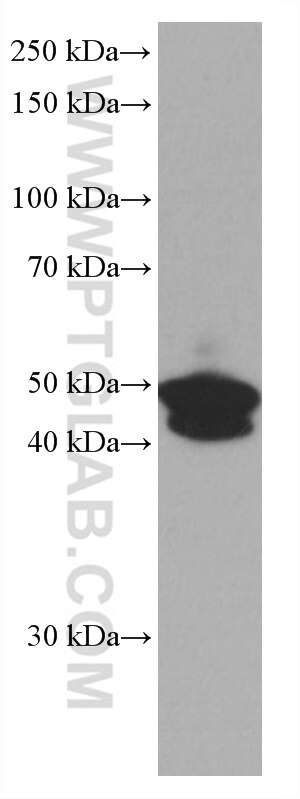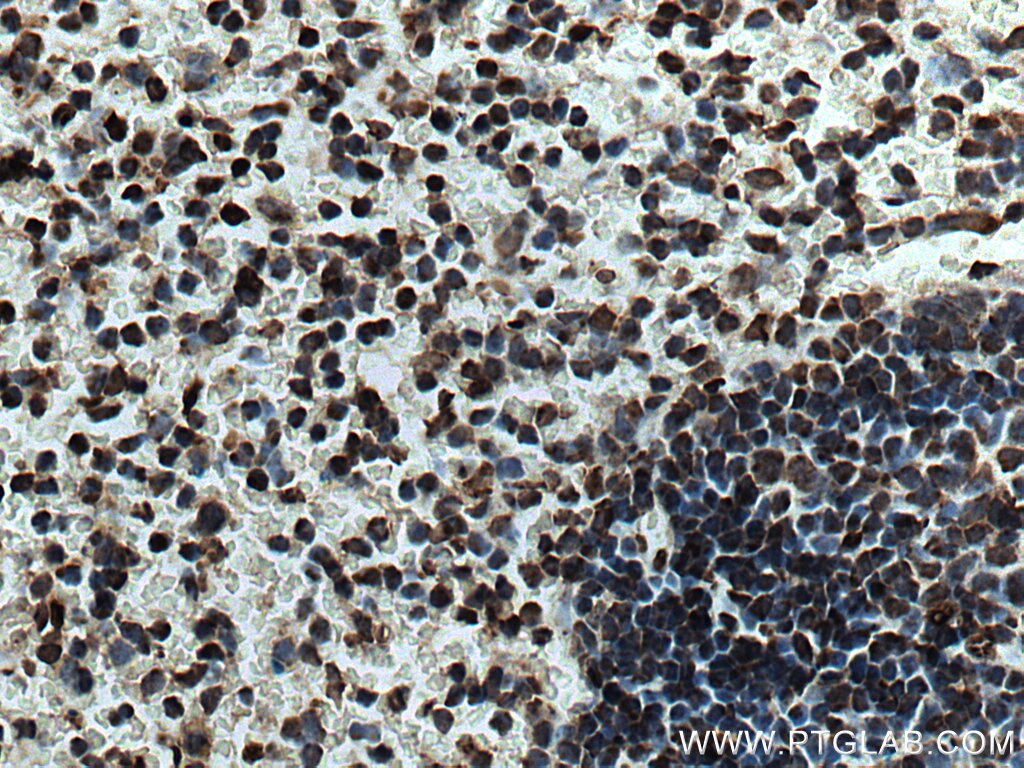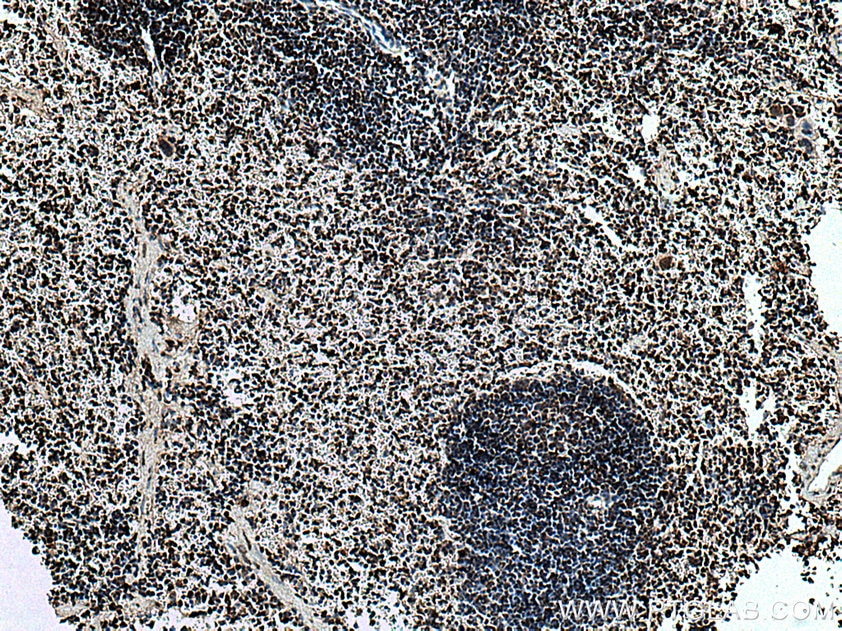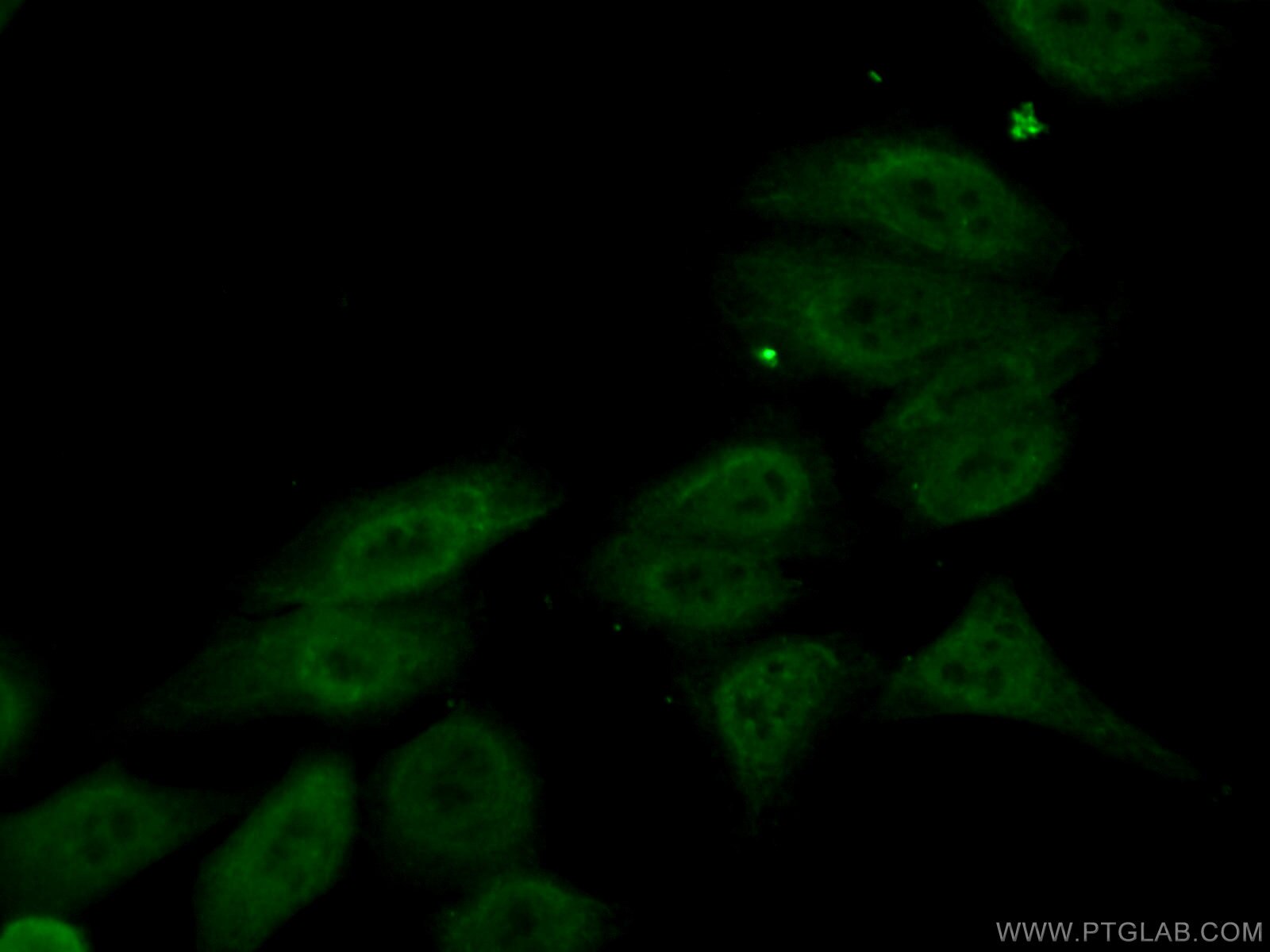Anticorps Monoclonal anti-NEIL1
NEIL1 Monoclonal Antibody for WB, IHC, IF/ICC, Indirect ELISA
Hôte / Isotype
Mouse / IgG2a
Réactivité testée
Humain, souris
Applications
WB, IHC, IF/ICC, Indirect ELISA
Conjugaison
Non conjugué
CloneNo.
1C6D6
N° de cat : 67012-1-PBS
Synonymes
Galerie de données de validation
Informations sur le produit
67012-1-PBS cible NEIL1 dans les applications de WB, IHC, IF/ICC, Indirect ELISA et montre une réactivité avec des échantillons Humain, souris
| Réactivité | Humain, souris |
| Hôte / Isotype | Mouse / IgG2a |
| Clonalité | Monoclonal |
| Type | Anticorps |
| Immunogène | NEIL1 Protéine recombinante Ag8307 |
| Nom complet | nei endonuclease VIII-like 1 (E. coli) |
| Masse moléculaire calculée | 390 aa, 44 kDa |
| Poids moléculaire observé | 44 kDa |
| Numéro d’acquisition GenBank | BC010876 |
| Symbole du gène | NEIL1 |
| Identification du gène (NCBI) | 79661 |
| Conjugaison | Non conjugué |
| Forme | Liquide |
| Méthode de purification | Purification par protéine A |
| Tampon de stockage | PBS only |
| Conditions de stockage | Store at -80°C. 20ul contiennent 0,1% de BSA. |
Informations générales
NEIL1, also named as NEH1 and FPG1, belongs to the FPG family. It is involved in base excision repair of DNA damaged by oxidation or by mutagenic agents. NEIL1 acts as DNA glycosylase that recognizes and removes damaged bases. It has a preference for oxidized pyrimidines, such as thymine glycol, formamidopyrimidine (Fapy) and 5-hydroxyuracil. NEIL1 has marginal activity towards 8-oxoguanine. It has AP (apurinic/apyrimidinic) lyase activity and introduces nicks in the DNA strand. It cleaves the DNA backbone by beta-delta elimination to generate a single-strand break at the site of the removed base with both 3'- and 5'-phosphates. NEIL1 has DNA glycosylase/lyase activity towards mismatched uracil and thymine, in particular in U:C and T:C mismatches. The increased BER activity of NEILs may represent an adaptive response against ROS-induced DNA damage resulting from aniline exposure, and could be an important mechanism for the removal of oxidative DNA lesions. (PMID:21145906)
